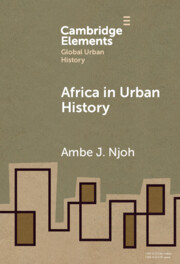5 results

Africa in Urban History
-
- Published online:
- 30 January 2025
- Print publication:
- 30 January 2025
-
- Element
-
- You have access
- HTML
- Export citation
Chapter 4 - Writing the Ghetto, Inventing the Slum
- from City Spaces
-
-
- Book:
- The City in American Literature and Culture
- Published online:
- 06 August 2021
- Print publication:
- 05 August 2021, pp 70-84
-
- Chapter
- Export citation
6 - The Black Ghetto
-
-
- Book:
- Society on the Edge
- Published online:
- 28 November 2020
- Print publication:
- 10 December 2020, pp 224-257
-
- Chapter
- Export citation

Social Avalanche
- Crowds, Cities and Financial Markets
-
- Published online:
- 18 January 2020
- Print publication:
- 09 January 2020
4 - Cities
-
- Book:
- Social Avalanche
- Published online:
- 18 January 2020
- Print publication:
- 09 January 2020, pp 144-187
-
- Chapter
- Export citation

